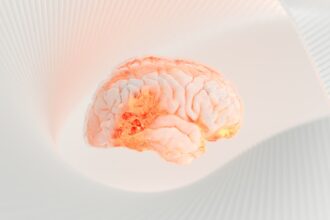Understanding the underlying reasons behind people’s actions and words is crucial in navigating social interactions. When you grasp the “why” behind someone’s behavior, you can respond more effectively and compassionately. This comprehension allows you to see beyond surface-level reactions and delve into the motivations that drive individuals.
Whether in personal relationships or professional settings, recognizing the reasons behind actions fosters deeper connections and enhances communication. It encourages you to approach situations with curiosity rather than judgment, paving the way for more meaningful exchanges. Moreover, understanding the “why” can significantly reduce misunderstandings.
When you take the time to consider what might be influencing someone’s behavior, you are less likely to jump to conclusions or make hasty judgments. This reflective approach not only benefits your relationships but also contributes to a more harmonious environment. By seeking to understand the motivations of others, you cultivate patience and empathy, which are essential qualities in any interaction.
Ultimately, this understanding can transform conflicts into opportunities for growth and connection.
Key Takeaways
- Understanding the why behind people’s actions and behaviors is crucial for effective communication and relationship building.
- Misreading people can lead to misunderstandings, conflict, and damaged relationships.
- Perception plays a significant role in misreading others, as individuals may interpret the same behavior differently based on their own experiences and beliefs.
- Bias and assumptions can cloud our judgment and lead to misreading others, making it important to be aware of and challenge these biases.
- Nonverbal communication, such as body language and facial expressions, can convey important information and should not be overlooked in understanding others.
The Impact of Misreading People
Misreading people can lead to a cascade of negative consequences that affect both personal and professional relationships. When you misinterpret someone’s intentions or feelings, it can create unnecessary tension and conflict. For instance, if you perceive a colleague’s critique as a personal attack rather than constructive feedback, you may respond defensively, escalating the situation.
This misreading not only harms your relationship with that colleague but can also impact team dynamics and overall productivity. The ripple effects of such misunderstandings can be far-reaching, affecting not just individuals but entire groups. Additionally, misreading people can lead to missed opportunities for connection and collaboration.
When you fail to accurately gauge someone’s emotions or intentions, you may overlook chances to bond or work together effectively. For example, if a friend is going through a tough time but you misinterpret their silence as disinterest, you might withdraw instead of offering support. This misreading can leave both parties feeling isolated and misunderstood.
By recognizing the potential impact of misreading others, you can become more vigilant in your interactions, striving for clarity and understanding.
The Role of Perception in Misreading
Perception plays a pivotal role in how you interpret the actions and words of others. Your unique experiences, beliefs, and emotions shape your perception, often leading to skewed interpretations of social cues. For instance, if you have had negative experiences with authority figures in the past, you might perceive a manager’s feedback as overly critical rather than constructive.
Understanding that your perception is influenced by your personal history is essential in mitigating misunderstandings. Moreover, perception is not static; it can change based on context and new information.
Being aware of this fluidity allows you to approach interactions with an open mind. When you recognize that your initial perception may not be accurate, you create space for dialogue and clarification. This willingness to reassess your views fosters a more nuanced understanding of others and encourages healthier communication patterns.
By actively questioning your perceptions, you can reduce the likelihood of misreading people and enhance your interpersonal relationships.
The Influence of Bias and Assumptions
| Metrics | Results |
|---|---|
| Number of biased decisions | 25 |
| Percentage of assumptions in data analysis | 15% |
| Impact of bias on project outcomes | Decreased by 30% |
Biases and assumptions can significantly distort your understanding of others, often leading to misinterpretations that harm relationships. These biases may stem from cultural backgrounds, personal experiences, or societal stereotypes that shape how you view different individuals or groups. For example, if you hold an unconscious bias against a particular demographic, you may misread their actions through a lens of prejudice rather than seeing them as individuals with unique motivations and feelings.
Recognizing these biases is the first step toward overcoming them. Challenging your assumptions about others is equally important in fostering better communication. When you assume you know what someone is thinking or feeling without seeking clarification, you risk creating misunderstandings that could have been easily avoided.
By approaching interactions with an open mind and a willingness to question your assumptions, you create opportunities for deeper connections and more accurate interpretations of others’ behaviors. This practice not only enhances your relationships but also contributes to a more inclusive and understanding environment.
The Power of Nonverbal Communication
Nonverbal communication is a powerful tool that often conveys more than words alone. Your body language, facial expressions, and tone of voice can significantly influence how your message is received and interpreted by others. For instance, if you’re speaking with someone but your arms are crossed and your gaze is averted, they may perceive you as disinterested or defensive, regardless of your actual intentions.
Being aware of your nonverbal cues allows you to align your body language with your verbal messages, fostering clearer communication. Furthermore, interpreting others’ nonverbal signals accurately is equally important in avoiding misreadings. A person’s posture or facial expression can provide valuable insights into their emotional state or level of engagement.
However, these signals can be easily misinterpreted based on your biases or assumptions. For example, someone who appears withdrawn may simply be deep in thought rather than disinterested or upset. By honing your ability to read nonverbal cues while remaining mindful of potential misinterpretations, you can enhance your understanding of others and improve your interactions.
The Importance of Active Listening
Active listening is a crucial skill that can significantly reduce the likelihood of misreading others. When you engage in active listening, you focus entirely on the speaker, demonstrating genuine interest in their thoughts and feelings. This practice involves not only hearing their words but also understanding the emotions behind them.
By giving someone your full attention and responding thoughtfully, you create an environment where they feel valued and understood. Moreover, active listening encourages clarification and dialogue, which are essential for preventing misunderstandings. When you ask questions or paraphrase what someone has said, it shows that you’re invested in comprehending their perspective fully.
This approach not only helps clarify any potential misreadings but also fosters trust and openness in your relationships. By prioritizing active listening in your interactions, you cultivate deeper connections and reduce the chances of miscommunication.
The Role of Emotional Intelligence
Emotional intelligence (EI) plays a vital role in how effectively you navigate social interactions and interpret the emotions of others. EI encompasses self-awareness, self-regulation, empathy, and social skills—all of which contribute to better understanding and connecting with those around you. When you possess high emotional intelligence, you’re more attuned to your own emotions as well as those of others, allowing for more accurate interpretations of social cues.
Furthermore, emotional intelligence enables you to respond appropriately to the emotions of others. For instance, if a friend expresses frustration, your ability to empathize with their feelings allows you to offer support rather than dismiss their concerns. This empathetic response fosters stronger relationships and reduces the likelihood of misreading their emotional state.
By developing your emotional intelligence, you enhance your capacity for understanding others and navigating complex social dynamics.
The Impact of Cultural Differences
Cultural differences can significantly influence how people communicate and express themselves. What may be considered polite or appropriate behavior in one culture might be perceived differently in another. For example, direct eye contact may signify confidence in some cultures but could be seen as disrespectful in others.
When interacting with individuals from diverse backgrounds, it’s essential to recognize these cultural nuances to avoid misinterpretations. Additionally, cultural differences can shape how emotions are expressed and understood. Some cultures may prioritize emotional restraint while others encourage open expression of feelings.
If you’re unaware of these cultural variations, you may misread someone’s emotional state or intentions based on your own cultural framework. By educating yourself about different cultural norms and being open to learning from others’ perspectives, you can enhance your ability to connect with individuals from various backgrounds while minimizing misunderstandings.
Overcoming Misreading Through Empathy
Empathy is a powerful antidote to misreading others’ intentions or emotions. When you practice empathy, you’re able to put yourself in someone else’s shoes and understand their feelings from their perspective. This practice allows for deeper connections and reduces the likelihood of misunderstandings arising from misinterpretations.
By approaching interactions with empathy, you’re more likely to respond compassionately rather than react defensively. Moreover, empathy encourages open dialogue and vulnerability in relationships. When individuals feel understood and validated through empathetic responses, they are more likely to share their thoughts and feelings openly.
This transparency fosters an environment where misreadings are less likely to occur because both parties are willing to communicate honestly about their emotions and intentions. By cultivating empathy in your interactions, you create stronger bonds with others while minimizing the chances of miscommunication.
The Value of Asking Questions
Asking questions is an invaluable tool for clarifying misunderstandings and avoiding misreadings in communication. When you’re unsure about someone’s intentions or feelings, posing thoughtful questions allows for greater clarity and understanding. Instead of making assumptions based on incomplete information, asking questions demonstrates your willingness to engage with the other person and seek their perspective.
Additionally, asking questions encourages dialogue that can lead to deeper insights into someone’s thoughts or emotions. It shows that you’re genuinely interested in understanding their viewpoint rather than simply reacting based on your perceptions or biases. This practice not only helps prevent misreadings but also fosters a culture of open communication where individuals feel comfortable expressing themselves without fear of judgment.
The Importance of Reflecting on Misreadings
Reflecting on past misreadings is essential for personal growth and improving future interactions. When you take the time to analyze situations where misunderstandings occurred, you gain valuable insights into your own biases and assumptions that may have contributed to those misinterpretations. This self-reflection allows you to identify patterns in your behavior that may lead to recurring misunderstandings.
Moreover, reflecting on misreadings provides an opportunity for learning and development in your communication skills. By considering how different approaches could have led to clearer understanding or connection with others, you’re better equipped to navigate similar situations in the future. This ongoing process of reflection fosters greater awareness of yourself and those around you while enhancing your ability to communicate effectively and empathetically.
In conclusion, understanding the complexities of human interaction is vital for fostering meaningful connections while minimizing misunderstandings. By recognizing the importance of understanding motivations, being aware of biases, practicing active listening, developing emotional intelligence, embracing cultural differences, cultivating empathy through questioning, and reflecting on past experiences, you empower yourself to navigate social dynamics with greater clarity and compassion.
Misreading people is a common occurrence that can stem from various psychological and social factors. One reason we might misinterpret others is due to our own biases and preconceived notions, which can cloud our judgment and lead to misunderstandings. Additionally, nonverbal cues, such as body language and facial expressions, can be easily misread, especially if we are not attuned to the subtle nuances of communication. For a deeper understanding of the psychological aspects that contribute to this phenomenon, you can explore a related article on the topic by visiting Unplugged Psychology. This resource delves into the intricacies of human perception and offers insights into how we can improve our ability to accurately read others.
WATCH THIS! The Shocking Truth About Perception Loops
FAQs
What are some common reasons for misreading people?
Some common reasons for misreading people include cultural differences, personal biases, lack of communication skills, and misinterpretation of body language and facial expressions.
How can misreading people affect relationships?
Misreading people can lead to misunderstandings, conflicts, and strained relationships. It can also result in a lack of trust and communication breakdowns.
What are some strategies to improve reading people accurately?
Strategies to improve reading people accurately include active listening, asking clarifying questions, being aware of personal biases, and learning about nonverbal communication cues.
Can misreading people be improved with practice?
Yes, misreading people can be improved with practice. By actively working on communication skills, empathy, and understanding nonverbal cues, individuals can become better at reading people accurately.




